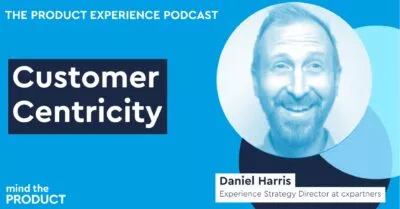11 Aug 2022
Five ways to accelerate customer centricity success
We studied how some of Europe’s top organisations work, and found that the organisations that beat everyone else were the ones that were most customer-centred.
-
Giles Colborne
Director of Strategy

The pandemic has underlined that we live in a volatile world, with constantly changing customer expectations that are demanding more of brands than ever before. Organisations face significant challenges: how can they grow post-pandemic? How can they attract and retain the best talent in the most competitive job market in years? And how can they be ready for the next unexpected situation?
In our Customer Centricity study, we looked at how some of Europe’s top organisations work, and looked at how well they perform in meeting those key challenges.
We found that the organisations that beat everyone else were the ones that were most customer-centred.
Organisations with high customer centricity grow 9 times faster than their competitors and they are four times more likely to have highly satisfied employees, with the ability to change course in weeks or months, rather than the years it would take others to change.
While all organisations say they care about their customers, the high-performing ones have an operational model that sets them apart. The entire organisation is set up to answer the questions: what do our customers need, and how can we adapt to give it to them? That’s what makes them so successful.
That difference manifested itself in five key behaviours – five keys to customer centricity.
1. De-centralise control
High-performing organisations gave their teams more freedom to make their own choices, and balanced top-down and bottom-up decision-making. However, it’s also important to consider how decisions are split in the decision-making process.
For example, high-performing organisations were far more interested in what their customers said, while low-performing organisations were more likely to prioritise managerial opinion.
Decentralising control has two main advantages. Firstly, decisions get made faster as you don’t need to wait for approval from the very top. Secondly, decisions are made by people working in close proximity to the customer, and those who spend more time analysing and understanding user research.
This means that the decisions made are of better quality, as they are more likely to take into account the overall impact on the customer.
2. Question everything, assume nothing
High-performing organisations were more likely to use data to inform decision-making – across all levels of the organisation. When setting a strategy, high-performing organisations also took into account market trends, customer insights and qualitative data – namely customer stories.
Qualitative data can be extremely valuable as it can give you a greater understanding of your customer, helping you make sense of other types of data you collect.
Being driven by data also means creating a culture that rewards employees for seeking out information, particularly relating to stories about your customers. This is facilitated by decentralising control; by allowing employees across your organisation to actively seek out information, you increase your bandwidth to gather and act on information relating to your customer.
3. Prioritise the employee experience
It’s also important to provide employees with the tools, technologies, and support they need to transform the customer experience. Our study also showed that high-performing organisations chose software and technology platforms based on customer outcomes – meaning issues like cost, politics and personal opinions were secondary considerations when selecting technology.
In addition, adopting a modular, more flexible approach towards technology and user interfaces can help. By investing in agile technology that is easy to update and replace, you can respond to customer-facing challenges faster – and improve the customer experience in the long-term.
4. Adopt a customer centric organisation chart
In our study, high-performing companies were more likely to have specialist roles focused on understanding customers, and converted these insights into products and services. With more user researchers available, high maturity organisations were able to embed these employees into product delivery teams, and give people within these roles autonomy in the decision-making process.
High-performing organisations also had employees operating as cross-functional teams across their organisation, rather than having each team managed separately. While this requires a degree of matrix management, allowing teams to collaborate across your organisation means you can combine expertise to solve customer problems – yielding quicker and more effective results.
5. Communicate relentlessly
Above skills, process and governance, internal communication was the biggest differentiator between high and low-performing organisations. Teams in high performing organisations were far more likely to be aware of how their projects fitted into the wider business strategy and aligned to other ongoing projects in the organisation.
Within this open dialogue, it’s also important to encourage sharing customer insights between teams. For example, by allowing those working in customer-facing roles to communicate customer needs and behaviour with employees responsible for project delivery.
Doing so will enable you to respond to customer queries faster and more effectively, improving the quality of decision making across your organisation.
The real benefits of customer centricity
Being truly customer centred means so much more than just making assumptions about what your customers’ needs are. It means embedding it into every level and way of working within an organisation.
By embracing a customer centric model, there is a huge opportunity to change the way organisations perform. Attention pivots towards creating better services, products and solutions to address the needs of customers – which in turn, drives financial success.
It’s no mean feat, but even moving up just one level in customer centricity can have a positive impact on the outcomes and growth of your business.
To read more about how you can become a more customer centric organisation, download our ‘The State of Customer Centricity‘ white paper. To access your customer centricity score, your benchmark against your peers, and a bespoke set of recommendations for improvement, take our self-assessment.
This article originally appeared on Business Reporter.











